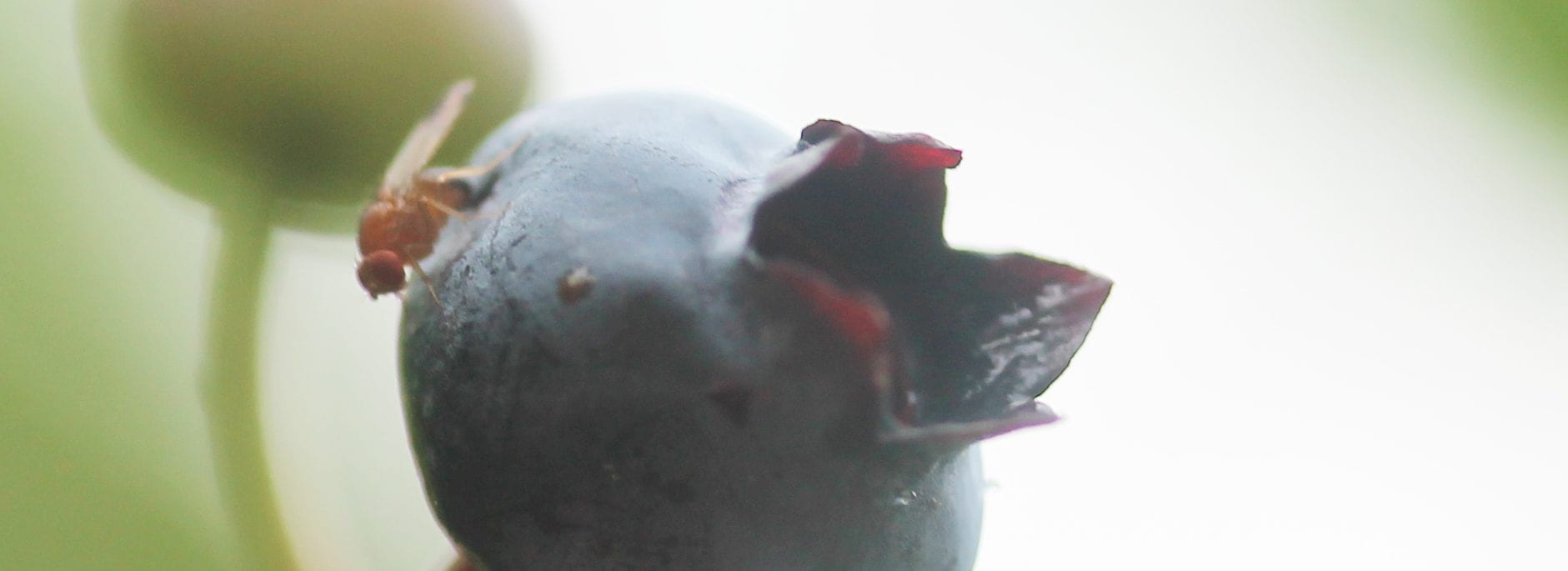As I sat one evening enjoying my glass of Cabernet Sauvignon on my patio in the Finger Lakes, I noticed several small fruit flies flitting about my wine. Hmmmm...yes, SWD. The tell-tale spots on the wings of the males were a dead giveaway. And I've grown so used to the golden brown somewhat hunchbacked body of the females, that I knew who they were. Red wine is known to be highly attractive to SWD, as is Concord grape juice. Both have been used as baits and drowning solutions in SWD traps. Although, I'd rather not waste wine in an insect trap.

This week Grace Marshall and I are doing a final check of the traps we have in our research plots. Last week, on average, we were catching 20 to 1000 SWD per trap in the summer raspberry and blueberry plantings with nary a fruit in sight. Counting the SWD in those traps is no small task. I was finding myself seeing spots — literally, SWD wing spots — the day after counting. One trap had 3022 SWD in it. In most of the traps the majority of fruit flies in them are SWD — upwards of 95%.

Our trap catch data from these berry plantings, confirms findings by other researchers that traps on the crop edge that are near woods catch more SWD than traps set within an insecticide-treated planting. Plantings that are surrounded by open fields, row crops, and roadways tend to have fewer SWD overall, as compared to plantings with wooded edges or ponds, streams and ditches nearby.
As populations of SWD continue to grow across the region, be aware that unprotected, susceptible fruit is at very high risk of SWD infestation, especially if allowed to hang until soft and ripe:
- blackberry
- fall raspberry
- day neutral or ever-bearing strawberry
- elderberry
- peach and nectarine
- plums and prunes
Fruit, such as peaches, nectarines, plums and prunes, that aren't highly susceptible to SWD may escape infestation even without insecticide treatment if harvested before they are fully ripe and soft. All will benefit from cold storage. Keep up on your SWD management tactics. Review the information on the SWD Management page of Cornell Fruit Resources, http://fruit.cornell.edu/spottedwing/management/.

